Having a WordPress website with all the essential functionalities is great! But if you are into business and want to make it big with your customers, WordPress forms are an indispensable aspect.
Be it a list builder form, a contact form, or a survey form, they are integral parts of any website design. That’s because forms are a priority feature to collect inputs from your prospects and initiate a relationship with them.
Essential elements of WordPress forms
A professional form makes it easier for your website visitors to reach out to you.
It is an effective channel of communication that can bring you business opportunities, leads, blog subscribers, potential customers, and more.
The possibilities are endless.
WordPress forms may contain any of the various input fields for different purposes:
- Text boxes: Short answers
- Text area: Long responses
- Submit button: Send the message
- Radio buttons: Choose one response from many alternatives
- Check boxes: Choose multiple responses from a list of options
- Upload button: Allow users to upload a document, image, etc.
- Reset button: Clear the form fields
- Drop-down list: Select an option from a set of given alternatives
- Web Address: Allow users to enter a URL of their website
Some things to keep in mind while designing your form
- Limited fields: Keep only necessary input fields. Having irrelevant fields and questions on a form can frustrate your prospective clients.
- Mobile responsiveness: Since we are living in the mobile era, your forms must be responsive.
Types of WordPress forms
Based on your requirement, the forms are classified into six types:
- Contact form
- Survey form
- Lead generation form/Subscription form
- Order form
- Event registration form
- Unsubscribe form
Contact form
Primary Purpose: Resolve customer queries or concerns.
The contact form is one of the most common types of web forms. Almost all the sites on the internet have a contact form for their visitors and they should.
Most contact forms have three input fields: Name, Email and Message. Some sites may have additional input fields based on the requirements and type of website. Some may even show an acknowledgment message to confirm that the message has been sent.
The contact form is also a safe way to receive emails. The messages are directed to your inbox, but you do not need to publicly display your email to the visitors. Thus, this helps in fighting spam as your email address is hidden.
Another advantage of a contact form is that the user can quickly fill out the form fields and press send. This avoids the hassle of copying the email ID from the website and then composing a new email using an email client like Gmail, Yahoo, Hotmail, etc.
Survey form
Primary Purpose: Gather feedback and data about your potential customers.
Survey forms are used for the following:
- For market research or to validate a product idea.
- By bloggers and marketers to gather feedback about their content and website design.
- As a pop-up or a dedicated web page.
Lead generation/Subscription form
Primary purpose: Capture the email leads and convert a casual visitor into a lead for your business.
Almost all the modern blogs have an opt-in form that collects leads.
Social media updates might get missed or ignored, but an email will definitely land in front of your potential client. This is why it’s crucial to convert your social media fans into email subscribers.
By entering an email in the lead generation form, the website visitor allows you to send them email updates regularly.
Lead generation forms are also used on landing pages where lead magnets are used to get emails from potential clients.
A few examples of strong lead magnets are tutorials, freebies, offers, white papers, and more.
Order form
Primary Purpose: Sell services or products.
If you run an e-commerce website or a SaaS (Software as a Service) business, an order form will help your users place their orders and proceed to checkout. The order forms can also have an integrated payment option such as PayPal, debit cards, credit cards, and more.
An order form may have elements such as credit card details, coupon code, ‘Buy Now’ button, etc.
Event registration form
Primary Purpose: Build a list for events
If you are organizing an event, a conference, or a meeting, you can avoid the hassles of maintaining a physical logbook by placing an event registration form on your website.
The form will automatically maintain attendee records and collect payments.
Unsubscribe form
Primary Purpose: Allow users to unsubscribe from your list
Some of your email subscribers might want to opt out of receiving any future emails. In another case, if you are a service-based business that regularly sends emails to its leads, you might want to create an unsubscribe page on your website.
The unsubscribe forms will let the disinterested users or subscribers opt out from future email updates, promotions, or announcements.
Although no one wants to place an unsubscribe form, you can’t force visitors to be your subscribers forever.
How to create WordPress forms: Coding or plugins?
I hope you are now clear on which type of form to use in a particular case.
Now let’s look at form creation.
Building a form using programming languages like PHP, HTML, and JavaScript would either require you to know the programming languages or you’ll have to hire a professional developer.
But hiring a professional web developer might be difficult to consider as it might go beyond an organization’s budget.
While there are plenty of WordPress form builders and plugins with the same elements like text input, buttons, drop-down menus, and others, the only difference is the customization options.
Benefits of form plugins
There are a plethora of reasons why websites are benefiting from form plugins. We’ve listed some of them below:
Saves costs
Plugins build forms without the help of a programmer. You can change or modify the style of a form anytime, making it a feasible option for an organization.
Custom design
The plugins help design forms that match your website theme. The customization includes brand colors, custom fields, shapes, and more.
Easy to build
The plugins provide a user-friendly interface to customize a form. This eliminates the need for your team to have a technical prowess or prior coding experience.
Multi-purpose forms
The WordPress forms created using plugins are easy to customize so they can be used for various purposes like contact forms, subscription forms, newsletter forms, email forms, signup forms, and others.
5 Best WordPress form plugins
There are a variety of WordPress form plugins available in the marketplace. Here we picked one of the best ones available:
Contact Form 7
Contact Form 7 is the most popular WordPress form creation plugin. After activation, a ready-made contact form is automatically added to your website and can be inserted into whichever page you’d like.
Pros
- Free of cost.
- Installation on unlimited sites is possible.
- Easy to create a basic contact form.
Cons
- Difficult to use for beginners.
- Difficult user interface and limited support options.
Ninja Forms
Ninja Forms is also a free WordPress form creation plugin with some pro features. It provides a drag-and-drop interface for beginners and customizable options for developers.
Pros
- Installation on multiple sites is possible.
- Easy for beginners since it offers drag and drop functionality.
Cons
- The extensions available for the plugin must be purchased separately.
- Does not support A/B testing.
- Editing form HTML is not possible.
Icegram Collect
Icegram CollectIcegram Collect is the easiest WordPress form and list-building plugin. The Icegram Collect plugin offers ready-made, high-converting opt-in forms that can be displayed anywhere on your website using the shortcode.
Pros
- Readymade forms and design styles.
- Embed forms anywhere on the website using a shortcode.
- Sends data directly to the CRM service.
Formidable Forms
Formidable Forms is a WordPress form plugin that creates stylish WordPress forms. It allows creating posts, tables, and graphs using collected data.
Pros
- Editable HTML
- Drag and drop functionality
Cons
- Form style is an enterprise feature
- Generic templates
Pirate Forms
Pirate Forms also joins the list of WordPress plugins having an easy user interface and creating simple forms.
Pros
- Completely free
- Includes CAPTCHA & SMTP
Cons
- No advanced functionality such as subscription forms, payment integrations, and others.
Seven vital tips to create WordPress forms
Keeping it simple
Ask for relevant information and make the process seamless with quick form fields such as clear labels and descriptions. Complicated forms might discourage visitors from filling it.
A conversion-driven CTA
Your CTA should inspire visitors to take action. Simple form design coupled with a click-worthy CTA is a recipe for lead generation success.
Simultaneously, you can also use power words like free, instant, discount, massive, best-selling, etc.
Create a sense of urgency
You can employ the persuasion tactic called scarcity to move your visitors to action. We are more likely to value opportunities that appear scarce and limited.
For example, the countdown timer pushes the visitors to enter their name and email.
Alignment with brand elements
The button on the form must stand out to grab your audience’s attention. While there is no particular color that you must stick with, it is best to add the color that aligns with your brand.
Likewise, you can also experiment with animations, GIFs, and other graphical elements that help your CTA to stand out.
Test for optimal placement
Placement of forms will affect your conversion rates. For example, subscription forms that are displayed above the page fold might capture more leads than those displayed at the end of a blog post.
You must test and find optimal placement to embed and display the forms, preferably above the page fold area of your website.
Images to build credibility
Nothing converts better than having an authoritative image that builds credibility.
This is another tactic that you can use to increase your conversion rates. We tend to associate popular and known figures with trust, credibility and success.
Show forms in pop-ups
It is proven that pop ups forms are best for conversion. Visual Website Optimizer increased its sign-ups by 50% using pop-up forms.
Why do pop-up forms work?
Here’s why:
- Less UI distraction.
- When a pop-up is displayed only the form is highlighted and the background is blurred or darkened.
- Minimum required fields = increased form completion rates.
Besides that, Yes-No CTA popups are also a promising option.
Read more about why Yes-No popups convert so well.
How to create high-converting popups in minutes?
Icegram is one of the most powerful WordPress plugins to grow subscribers and increase conversions. Icegram offers beautiful, attention-grabbing, and well-timed popups that can skyrocket your conversion rates.
Using the Icegram plugin, you can easily create customized popups with text, images and background colors of your choice. The option for customization allows you to create popups that match your website theme.
What to do after form creation?
Okay, you have made the best form ever and collected leads. What to do next?
It’s now time to market your brand through emails. Here’s what to do:
Connect your form to an email marketing tool
You must nurture the subscribers and leads that you collect through your lead forms.
Email marketing tools such as Icegram Express is compatible with list-building/form-building plugins like Icegram Collect that will make your email marketing efforts a breeze.
Also, people who subscribe to this Icegram Collect form will be saved in the database. You can then send automatic blog post notifications to subscribers.
Not just that, you can also send promotion offers, updates, etc., using Icegram Express.
Icegram Collect also integrates with MailChimp, AWeber and other top email marketing services.
Target/re-target to boost conversions
Target visitors based on time, location, or behavior.
You may show forms or pop-up forms depending on the time spent by the visitor on your website. Another way of targeting is showing forms on specific pages of your site.
You can also set re-target rules for visitors who aren’t convinced in the first visit.
A plugin like Icegram does all the heavy lifting for you once you have defined the targeting and re-targeting rules.
All these efforts help you increase your relationship with customers and get you more and more loyal customers.
Bonus: How about readymade forms?
Icegram Collect WordPress plugin is compatible with all WordPress themes and plugins. It has beautiful, readymade forms with easy customization options.
It gives you the freedom to place forms anywhere on your website.
You can integrate Icegram Collect with the MailChimp email marketing service. The data collected through Icegram Collect can also be submitted to your own CRM.
Icegram Collect can be coupled with Icegram, which offers high-converting popups, action bars, overlay and calls to action.
Whether you’re a blogger, marketer, or an e-store owner, Icegram Collect can help you collect leads without any coding hassles. It saves tremendous time and effort in form creation.
Set up the conversion machine in 5 minutes! Get started with Icegram Collect now!
Conclusion
The form is a communication medium that encourages visitors to take action, initiating a communication loop.
Using WordPress forms on your website is effortless using WordPress plugins, providing high benefits and will remarkably improve your conversions and provide a better user experience.
I hope this guide helped you discover the potential of WordPress forms and the opportunities that it brings to you!
FAQ
Are WordPress forms mobile responsive?
Most modern form plugins are mobile-friendly by default. However, it’s still good practice to preview your form on various devices to ensure smooth user interaction.
What are the performance impacts of using too many forms or plugins?
Using too many form plugins can slow down your website. Stick to one well-optimized plugin, limit the number of fields per form, and ensure all scripts load only where necessary.
Is it possible to get form submission notifications via email?
Yes. Most form plugins allow you to configure email notifications for each submission—either to the admin, the user, or both.
How do I prevent spam in WordPress forms?
You can enable Google reCAPTCHA, use honeypot fields, or limit form submissions with anti-spam settings in most form plugins. This helps prevent bots from misusing your forms.
Are WordPress forms GDPR compliant?
They can be. You should add checkboxes for user consent, clear privacy statements, and avoid storing sensitive data without permission. Most plugins provide built-in GDPR compliance features.
What are the performance impacts of using too many forms or plugins?
Using too many form plugins can slow down your website. Stick to one well-optimized plugin, limit the number of fields per form, and ensure all scripts load only where necessary.



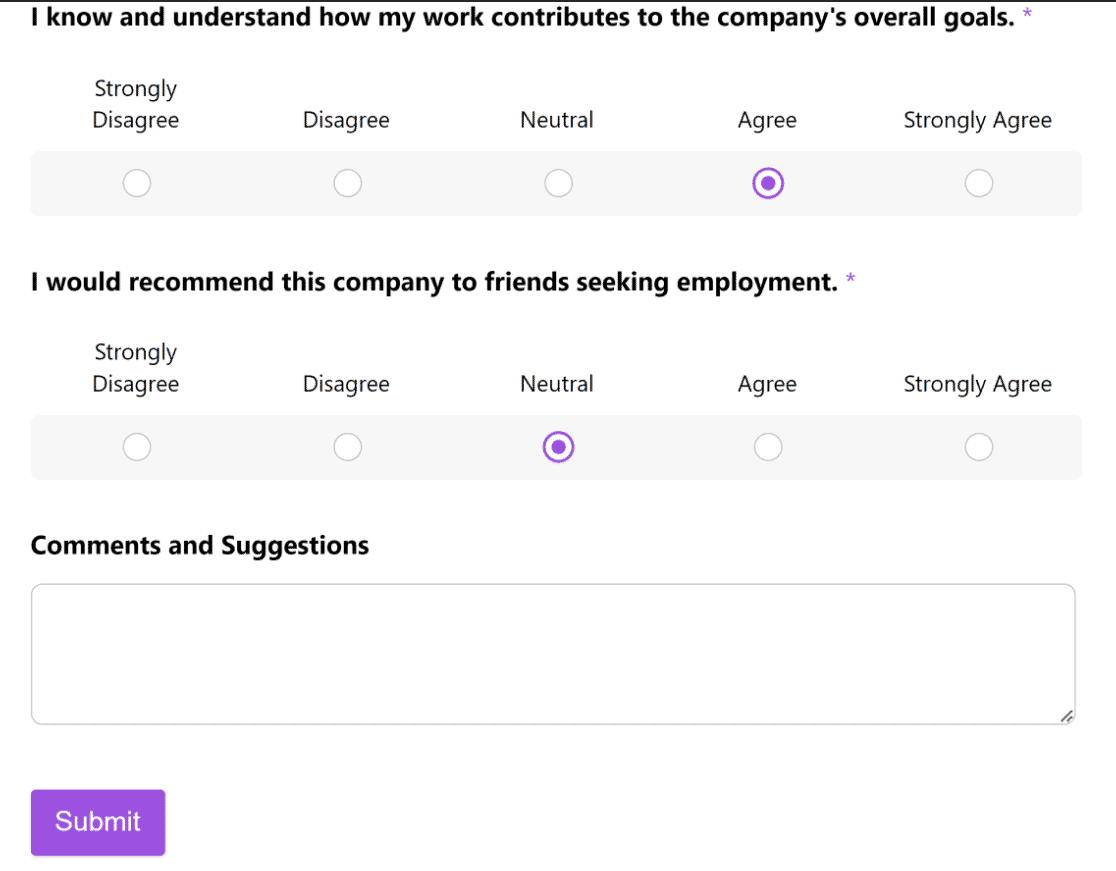
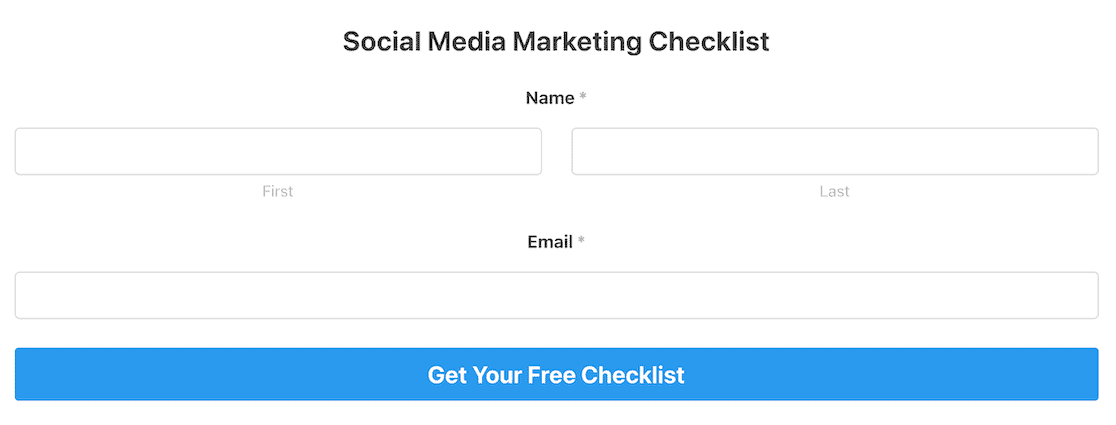
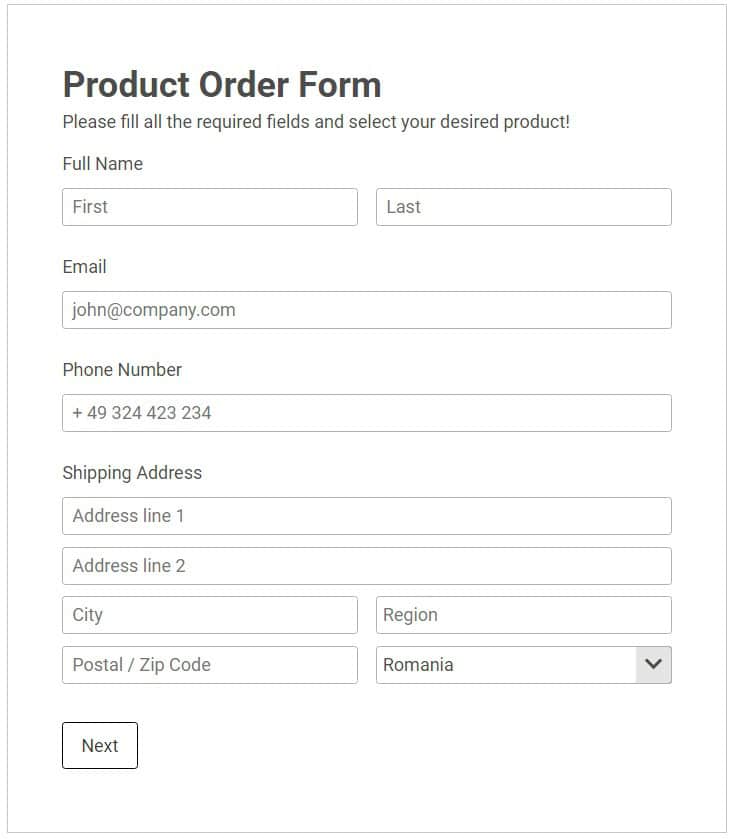
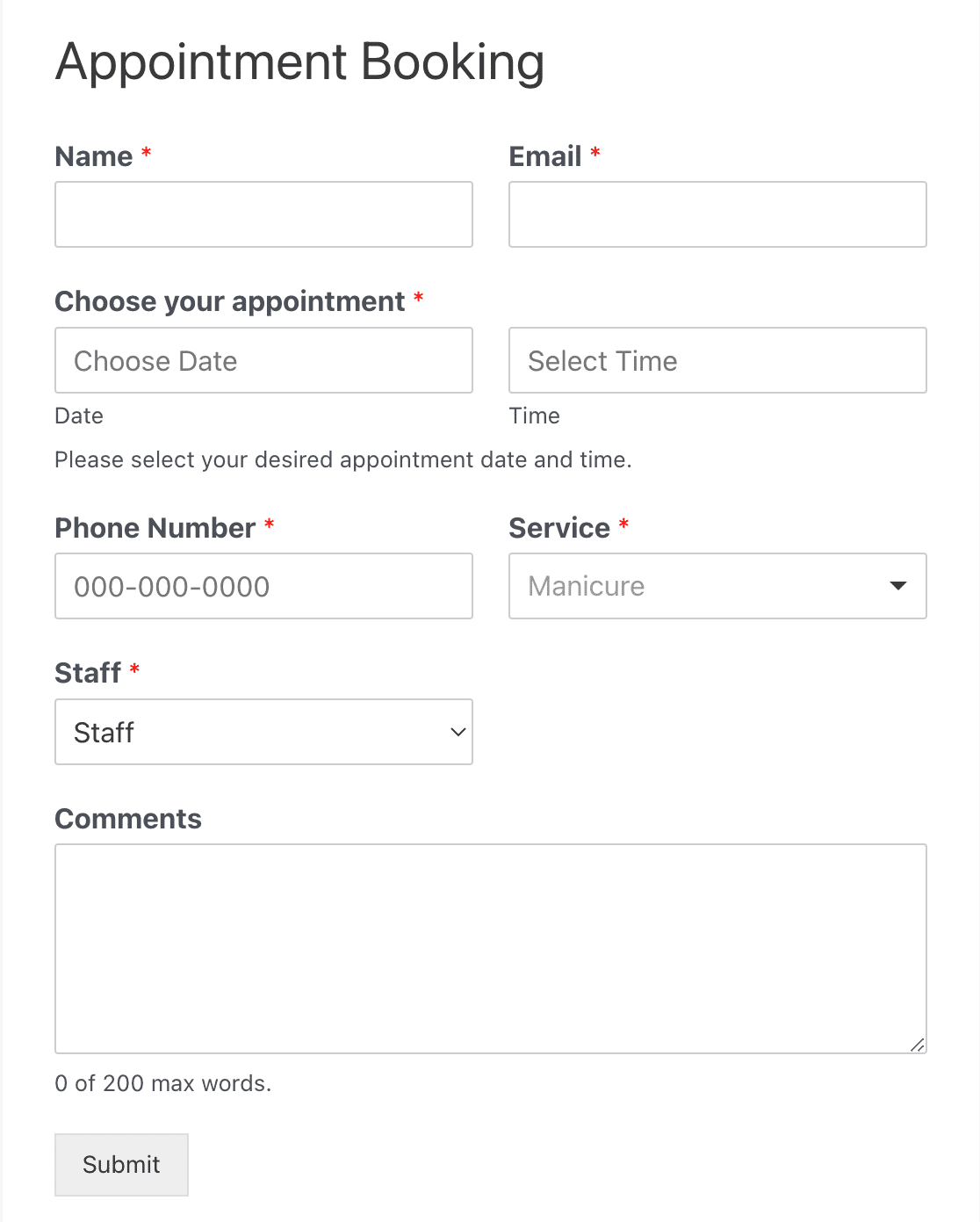
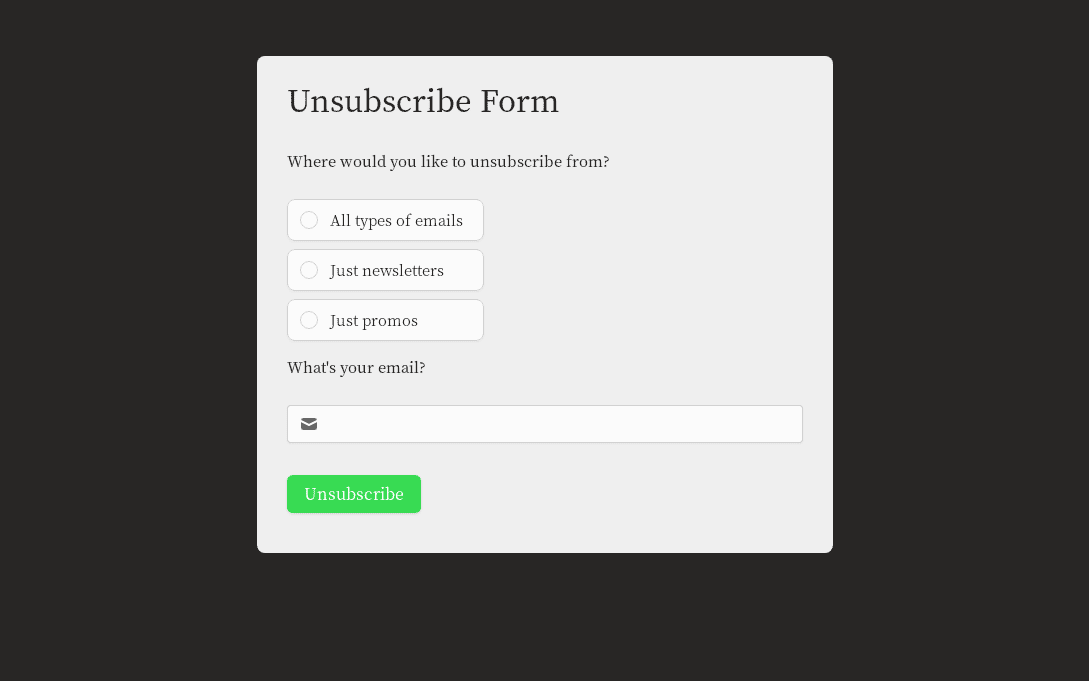
I was planning to start a business site and was not sure, which one to choose, where to begin, because I’m a fresher in this field. And this post came across me like a magic. Thanks a lot for sharing this post and helping me getting into word press..
Hi Bruce,
Thank you for the appreciation. Glad you found the post useful.
Feel free to read other articles and contact us if you need any help. Wish you all the best.